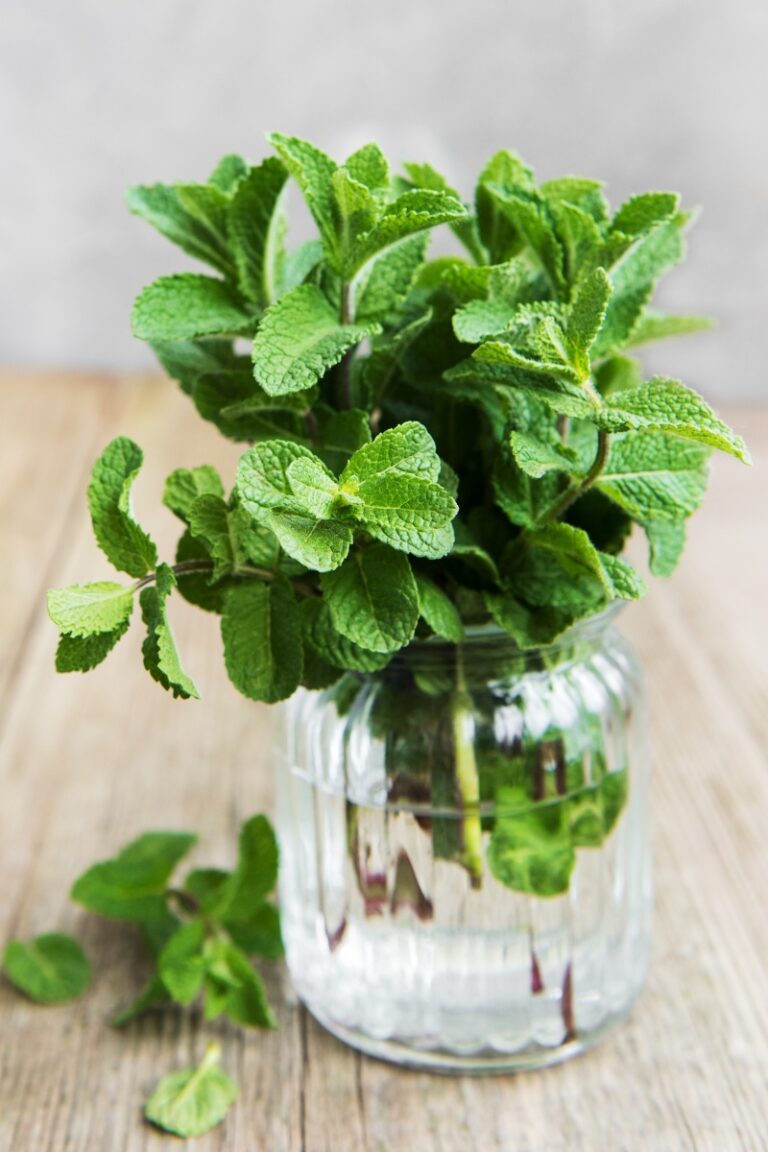Do Mint Plants Flower? Everything You Need to Know!
Have you ever found yourself gazing at a lush patch of mint in your garden or your raised beds, wondering about those unexpected delicate little blossoms it produces? Mint, with its vibrant leaves and unmistakable aroma, is a popular addition to many herb gardens. But what about those dainty purple and pink flowers that occasionally grace your minty friends?
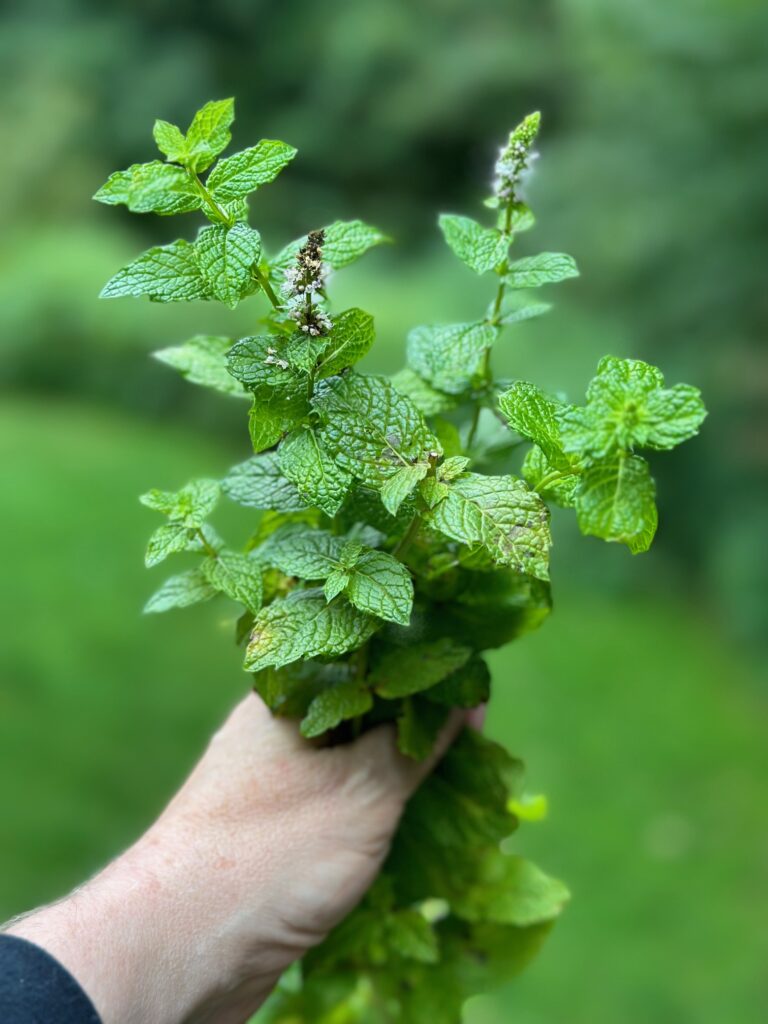
In this article, we're diving headfirst into the fascinating world of mint plant flowering. Genus Mentha (mint) is not just a flavorful herb; it's also a botanical wonder that goes through a natural life cycle, including blooming. So, if you've ever wondered why your mint plants decide to throw a flowery fiesta, you're in for a treat.
In this post, we'll unlock the secrets behind the mint's flowering habits, explore its perennial life cycle, and decipher the telltale signs that your mint is gearing up for a floral spectacle. But that's not all—there's a lot more minty goodness coming your way! We've got your mint-related questions covered, from exploring the culinary potential of mint blossoms to mastering the art of preventing your mint from going into full bloom and understanding why this might be important to you. So let's dive in!

Content may contain affiliate links. When you shop the links, we receive a small commission at no cost to you. Thanks for supporting my small business.
The Natural Cycle of Mint Plants
Picture this: You're enjoying a cool, minty drink in your garden, a refreshing mojito to be specific, and you can't help but notice those mint plants bursting into soft pastel blooms. Ever wondered why they do that? Well, let's take a stroll through the fascinating life cycle of mint plants to find out.
Why Mint Plants Flower?
Mint plants, like many others in the botanical world, have a simple reason for those delicate blossoms – survival. These spear-shaped blooms are all about helping mint plants reproduce, acting as nature's matchmakers to create new minty offspring.
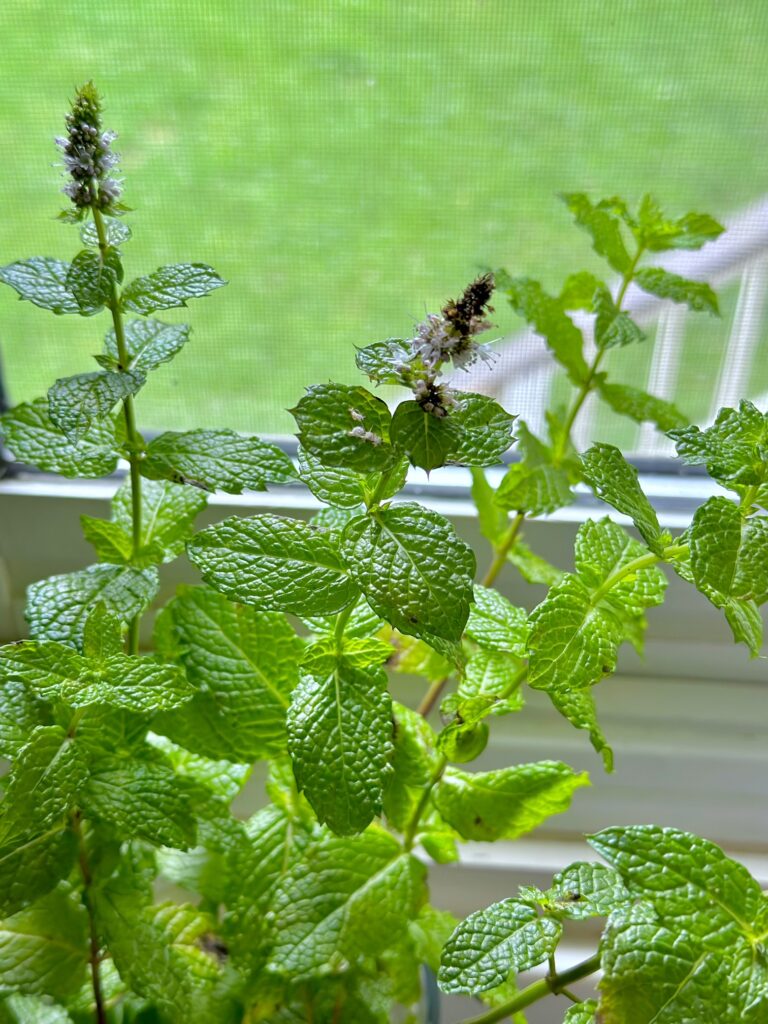
The Reproductive Role of Flowers
Flowers are not just there to look pretty; they're the reproductive powerhouses of the plant world. Within those petals, pollen is produced, and when it lands on the right spot of another flower, it kickstarts fertilization. This union leads to the creation of seeds, which are the building blocks for new mint plants. So, every time you spot those minty blooms, know that it's nature's way of ensuring the minty legacy lives on.
The Connection Between Flowering and Plant Health
You might wonder if flowering signals the end of the road for your beloved mint. Here's the good news: Mint is a perennial champ. It doesn't say goodbye right after showing off its flowers. Instead, it keeps thriving. However, there's a catch. Flowering might slightly alter your mint's flavor. The leaves tend to be a tad less minty after flowering. But don't fret; your mint plant is still healthy and robust.
In essence, when your mint plants flower, it's not a farewell; it's a salute to life and a promise of more minty goodness to come. So, the next time you come across those blossoms, you can appreciate their role in nature's intricate process.
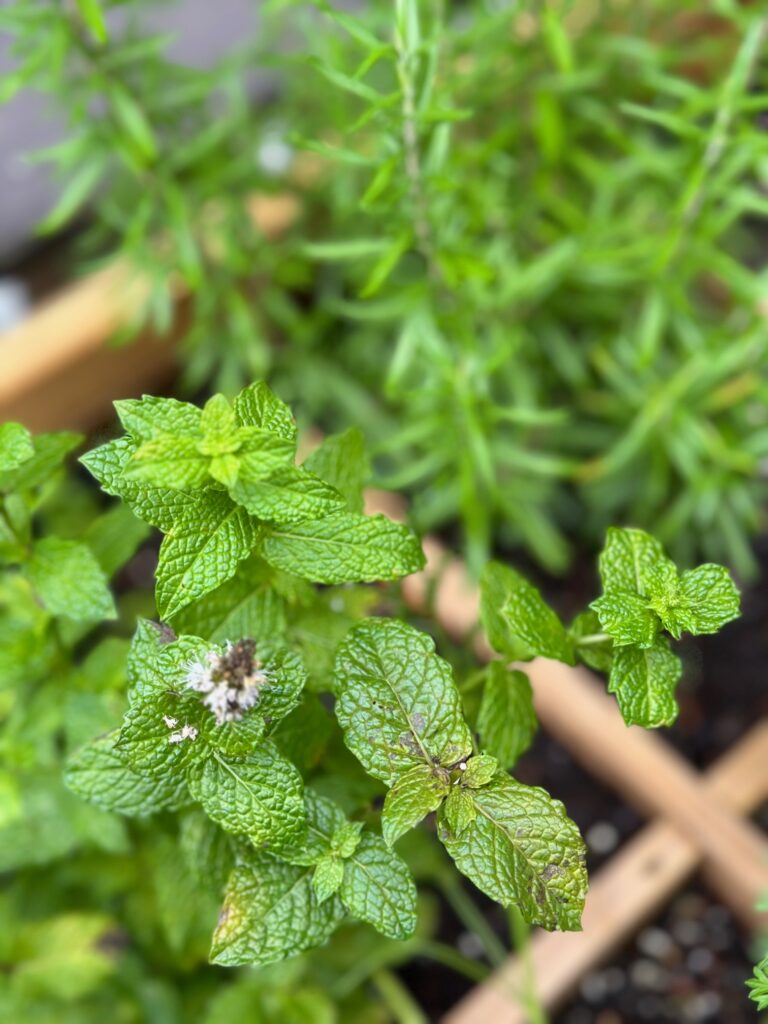
Shop this Raised Garden Bed 8 Pocket Herb Garden
Mint's Secret to Longevity
Mint, as you're discovering, is not just a one-season wonder. It's a herbaceous hero that persists through the years, and understanding its life cycle is key to appreciating its blooming phases.
Mint: The Hardy Perennial Mint is what we call a "hardy perennial," which means it's in it for the long haul. With the right conditions and a bit of TLC, mint can thrive for two years or more. This perennial herb is an excellent addition to your garden, providing minty freshness season after season.

Propagation Methods: Seeds and Cuttings Now, let's talk about mint's journey from a tiny seed to a full-grown bush. Mint plants can be propagated through two primary methods: seeds and cuttings. When you sow mint seeds in early spring, they sprout within a few weeks, eventually growing into a full, leafy bush. On the other hand, you can take a cutting from the parent plant, root it, and watch it grow into a thriving new mint plant.
The Long Life of Mint with Proper Care: When mint is properly cared for, it can defy the odds and live for many years. It's a survivor, even in the harshest winters. While the stems above the ground may wither in the cold, the resilient roots remain alive. With the arrival of spring, new shoots emerge, and your mint plant rejuvenates itself, ready to embark on another round of growth. It's really quite exciting!!

When Mint Plants Blossom: Timing the Floral Spectacle
Mint plants have their own floral calendar, and understanding when they go from flower buds to full bloom adds another layer of fascination to your garden.
- The Influence of Temperature: One of the primary factors that nudges mint plants into flowering mode is temperature. As the mercury rises and the days get warmer, your mint plants get the signal that it's time to put on a floral show. Higher temperatures, especially in summer, trigger mint's blooming.
- Seasonal Timing of Mint Plant Blossoms: In the world of mint, late summer is the season of blossoms. Typically, flowering commences in midsummer and continues into the autumn months. This seasonal timeline coincides with the peak of warmth, making it the perfect time for mint to show off its vibrant purple and pink blooms.
- Recognizing the Telltale Signs: If you want to be the first to know about your mint plant's impending floral display, keep an eye out for a few signs. As summer transitions into autumn, you might notice a gradual slowdown in leaf production. Tiny white or purplish flowers will begin to emerge above the lush foliage, and the stems may appear less bushy and more woody. These are nature's cues that your mint is getting ready to bloom with soft flower heads made of clusters of tiny star-shaped blooms.

As summer transitions into autumn the stems may appear less bushy and more woody.
Post-Flowering Facts
The enchantment of mint plant flowering doesn't end with the blossoms themselves. There are some common misconceptions about mint plants after they flower, and this section is here to clarify them.
Dispelling the Myth that Mint Plants Die After Flowering
Contrary to popular belief, mint plants do not meet their demise after flowering. These hardy perennials have many years ahead of them, even post-bloom.
How Mint Leaves Maintain Their Quality
You might be wondering if mint leaves remain as flavorful after the plant flowers. The good news is that they do. You can continue to use them in your culinary creations and beverages, just as you did before. There might be a slight difference in flavor intensity but mint leaves remain flavorful and can be used in culinary applications even after the plant flowers.
Whether It's Necessary to Remove Mint Flowers
While it's not essential to remove mint flowers, doing so can prevent your mint from self-seeding and expanding into numerous new plants. This practice allows you to maintain better control over your mint patch and garden.

Edible Mint Flowers
Mint flowers offer not only visual appeal but also unique flavors to elevate your dishes. Depending on the type of mint, these purplish-white blossoms may carry hints of lemon, apple, or grapefruit. It's an opportunity to add a fresh, unexpected twist to your meals, not to mention a beautiful garnish! In this section, we'll delve into the incredible flavors and creative culinary uses of mint blossoms, providing you with practical ways to incorporate them into your favorite recipes. Whether you're a seasoned chef or a home cook looking to experiment, these edible blooms will take your dishes to the next level.
Flavorful Mint Blossoms
Mint flowers are more than just pretty; they offer a unique flavor profile. Depending on the type of mint, as mentioned above these spikey purplish-white blossoms may have hints of lemon, apple, or grapefruit, bringing an unexpected twist to your dishes.
Creative Culinary Applications
Unlock the culinary potential of mint blossoms. These delicate flowers aren't just for decoration; they can elevate your dishes. Enhance the flavor of lamb, steak, seafood, or even desserts with a sprinkle of mint blossoms. These edible blooms can be a secret ingredient to impress your guests.

Decorative and Flavorful Additions
Beyond taste, mint flowers add visual appeal to your creations. Learn how to use them as decorative accents to transform your dishes into works of art, whether you're hosting a dinner party or treating yourself to a special meal. Here are 10 ways to use mint flowers as decorative accents:
- Garnish for Desserts: Sprinkle mint's purple or white flowers on cakes, pastries, or ice cream for a delightful and visually appealing finishing touch.
- Cocktail Decor: Float mint's small flowers on top of cocktails or mocktails to add elegance and a burst of fresh flavor.
- Salad Enhancements: Toss mint flowers into your salad for a pop of color and a subtle minty note that complements greens and other ingredients.
- Fruit Arrangements: Use mint flowers as part of fruit arrangements or fruit salad toppings to make them look more enticing.
- Plate Decoration: Place a single mint flower or a small bouquet of them on the side of your plates to elevate the presentation of your main courses.
- Herb Bouquets: Combine mint flowers with other edible flowers and herbs to create beautiful and aromatic bouquets as centerpieces.
- Tea and Infusions: Float mint flowers in your tea or herbal infusions for a visually appealing and fragrant beverage.
- Edible Confetti: Chop mint flowers finely and use them as edible confetti to sprinkle on various dishes for a burst of color and flavor.
- Cake Decorating: Decorate cakes with mint flowers by arranging them along the edges or in the center for a stunning cake topper.
- Ice Cubes: Freeze both mint flowers and fresh mint leaves into ice cubes to add a touch of elegance to your beverages.
These creative uses not only enhance the aesthetics of your dishes but also infuse them with the fresh and subtle flavors of mint blossoms.

Preventing Mint from Flowering: Practical Tips for Control
Ready to take control of your mint's destiny? In this section, we'll explore practical strategies for managing and delaying your mint plants' flowering process. Mint plants are resilient, but with a few simple practices, you can empower yourself to decide when those vibrant blossoms grace your garden.
The Importance of Pruning and Harvesting
Pruning and regular harvesting are essential not just for maintaining the appearance of your mint but also for preventing premature flowering. Mint is a fast-growing herb and these techniques keep your mint lush, leafy, and ready for your culinary adventures.
Managing Factors That Induce Mint Flowering
Understanding what factors trigger mint plants to flower is key to keeping them in check. From temperature control to nutrient management, we'll guide you through the science of influencing your mint's decision to bloom. Stay in charge of your mint's fate, and enjoy the benefits of flourishing foliage for longer.

Master the Art of Pruning for a Flourishing Mint Garden
Pruning is an integral part of mint plant care that contributes greatly to your mint's health and longevity. Let's explore when and how to prune mint as well as the many benefits proper pruning provides.
Why Pruning Is Crucial for Mint Plants
Pruning accomplishes a few key things that keep your mint thriving. It maintains an attractive shape by removing dead or damaged growth. Pruning also curbs rampant spreading by cutting back outward creeping stems. Importantly, it stimulates new growth from the plant's center to stay lush. Pruning significantly delays flowering as well since you're removing the woody, flower-producing top growth. Overall, pruning enhances the performance and lifespan of this flowering plant.
When to Prune Mint for the Best Results
Time your pruning right by understanding mint's growth patterns. Prune in early spring to remove dead winter growth and shape plants. Pruning after flowering finishes redirects energy to leaves and delays the next bloom. Then prune occasionally through summer to encourage bushiness. It's a good idea to prune mint planted in containers more frequently. Disinfect tools between plants to prevent the spreading of diseases.
Proper Pruning Techniques for Mint
Use clean, sharp pruners or Scissors for precise cuts. Make cuts on stems just above leaf nodes where new growth can emerge. Remove any diseased or pest-infested stems entirely. Cutting the plant back by ⅓rd of its size is sufficient to stimulate regrowth. Always prune in the morning on dry, sunny days for quick healing. Be diligent as mint regrows quickly.
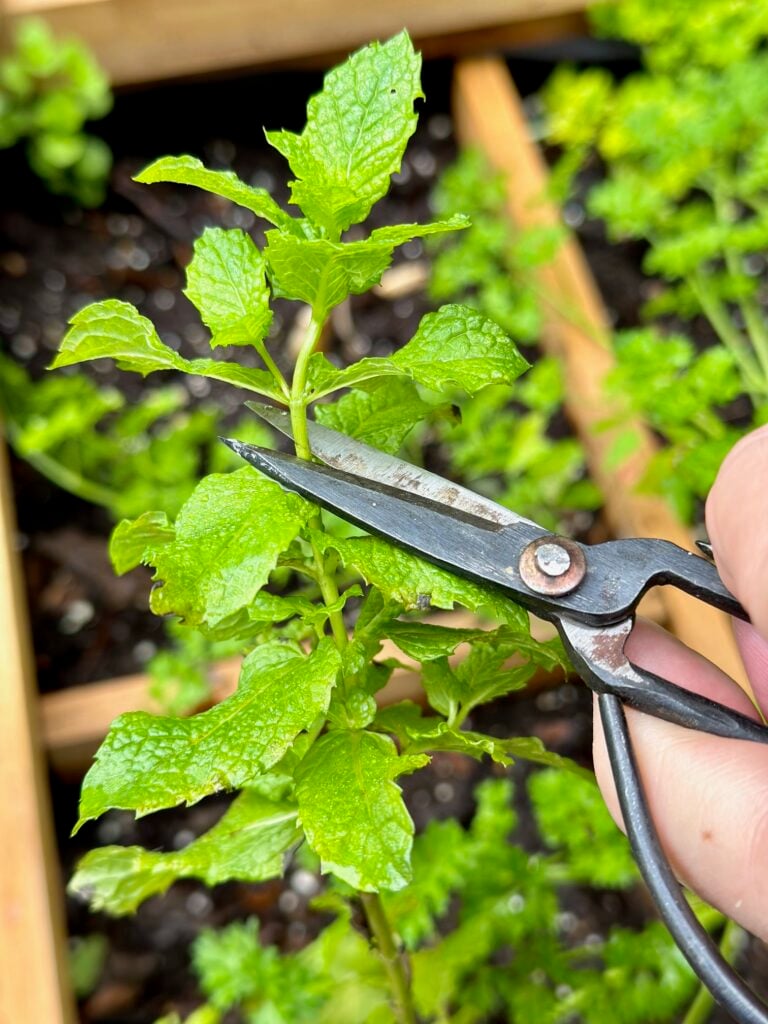
The Many Benefits of Consistent Mint Pruning
Beyond looks, consistent pruning provides many benefits:
- Promotes bushy, compact growth
- Maximizes leaf production for harvest
- Rejuvenates mint year after year
- Deters pests like spider mites
- Improves air circulation and health
- Reduces the spread of disease
- Curbs early flowering for prolonged leafing
By mastering mint pruning techniques, you ensure your plants keep producing a bountiful, vibrant harvest season after season. Just a few snips here and there makes all the difference!
Frequently Asked Questions about Mint Plants Flowering
Practical strategies for preventing mint from flowering include regular pruning, harvesting, using mulch, and providing shade to reduce exposure to high temperatures.
The best time to prune mint is right after the flowering season ends. However, light monthly trims during the growing season help maintain bushy growth and prevent early flowering.
You can use mint flowers in salads, as garnishes for cocktails, in desserts, and even in savory dishes like lamb or seafood for a fresh, exotic flavor.
Mint plant's white and purple flowers both have a mild, minty flavor, often with hints of lemon, apple, or grapefruit, depending on the variety of mint. Their taste makes them a versatile addition to various dishes and drinks.
Contrary to common belief, mint plants do not die after flowering. They are a hardy perennial plant that can thrive for several years, even post-bloom.
No, a flowering mint plant does not affect the quality or flavor of the leaves. You can continue to use these tasty fragrant herbs in culinary dishes and beverages as you did before.
Mint plants, including varieties such as chocolate mint, pineapple mint, mint julep, lemon mint, and orange mint, have the potential to produce flowers. However, whether these specific mint varieties will flower depends on various factors such as their age, growing conditions, and how they are cared for. While some mint varieties may have more pronounced flowering tendencies, proper maintenance, such as regular pruning and harvesting, can help prevent excessive flowering and maintain the focus on their aromatic leaves for culinary and aromatic purposes.
Beyond their culinary applications, mint flowers serve various purposes. They are valued for their essential oils, which find use in aromatherapy and perfumes. Medicinally, they are used in herbal remedies to alleviate digestive discomfort and provide stress relief. Overall, mint flowers have a wide range of applications beyond the kitchen, spanning aromatics, wellness, and herbal remedies.
Using a nitrogen-rich fertilizer can potentially lead to more vigorous growth and flowering. However applying a balanced, all-purpose fertilizer in moderation provides nutrients without necessarily increasing flowers. Maintain proper fertilizing schedules for robust mint without going overboard.

And there you have it, folks - the keys to unlocking the secrets of your mint's fabulous flowers!
Let's circle back to the key ideas so you can impress all your gardening friends with your new mint mastery:
- Mint blooms are nature's way of creating new little mint babies! Pretty and purposeful.
- Flowering is just one phase in mint's perennial life cycle. With TLC, it keeps on thriving.
- A floral show means your mint is healthy, not ready to be plant history. No need to panic!
- Timing those prunings and pinching off buds keeps mint leaves flourishing longer.
- And hey, don't forget those flowers are edible! Sprinkle them in dishes for bonus flavor.
When you care deeply for your mint, it returns the favor with vigor and abundance. Pay attention to its needs, be proactive with maintenance, and enjoy the minty bounty.
With all these minty insights, you're ready to grow flourishing mint that will make your garden the hot spot for tea parties! I'll be thinking of you next time I sip a refreshing mojito garnished with pretty mint blooms.
For more herb-related posts visit:
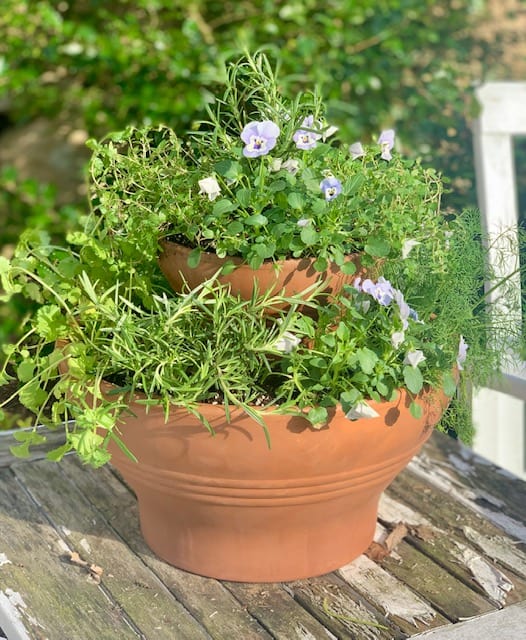
12 Best Herb Garden Plants: Expert Insights for Caring and Harvesting the Finest Plants: Ready to up your herb gardening game? Dive into '12 Best Herb Garden Plants' for expert insights on nurturing and harvesting the finest herbs. Transform your garden into a flavorful haven with these tips and plant recommendations!

How Often to Water Lavender Indoors: A Comprehensive Guide: Ready to elevate your herb gardening skills? Dive into '12 Best Herb Garden Plants' for expert insights on cultivating and harvesting the tastiest herbs. Level up your garden and savor the flavors with these top-notch tips and plant suggestions!

Cutting Dill Made Easy: Techniques, Tips, and Uses: Elevate your dill-cutting skills effortlessly with 'Cutting Dill Made Easy.' Explore techniques, tips, and versatile uses for this flavorful herb.
Thanks for visiting the blog today! I hope you found this Do Mint Plants Flower? Everything You Need to Know! Post helpful!
Happy gardening friends!





